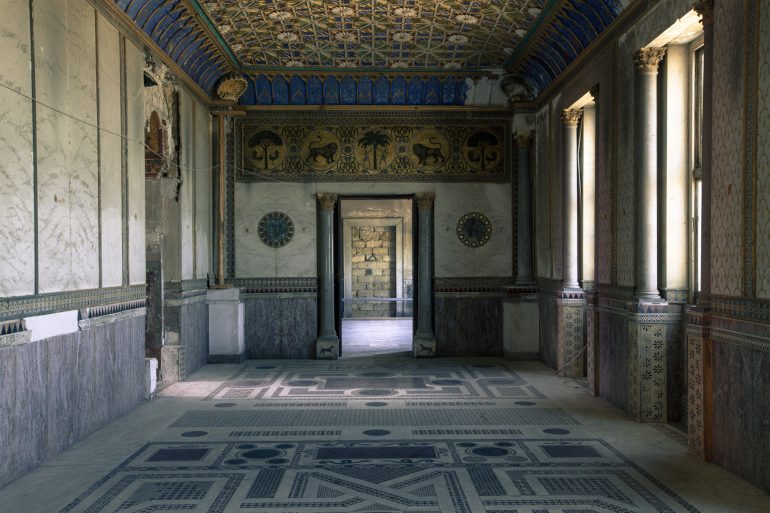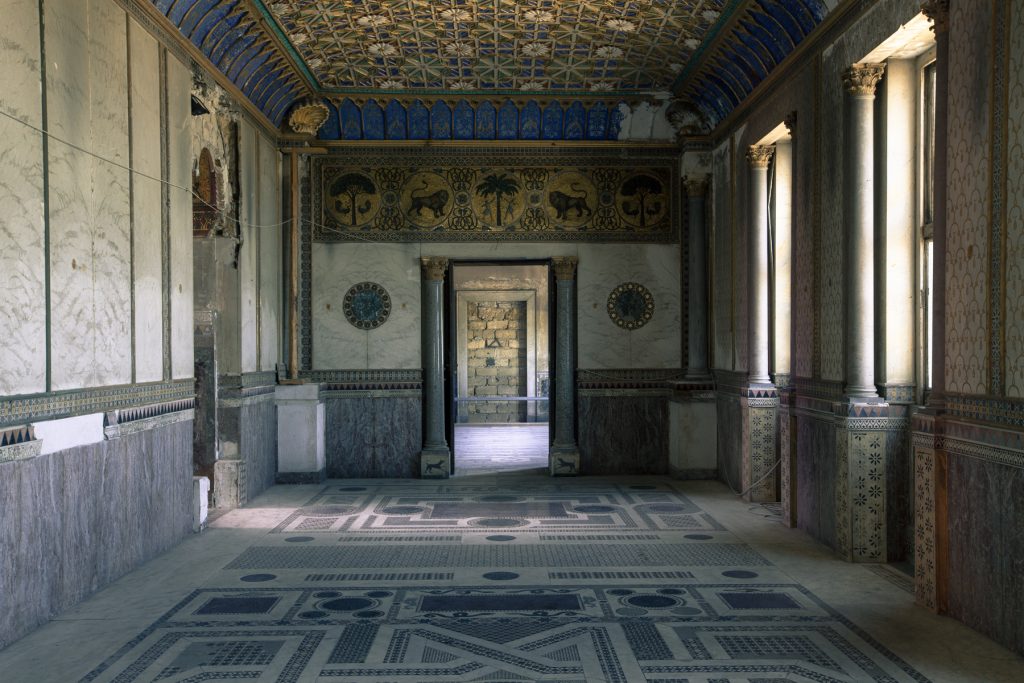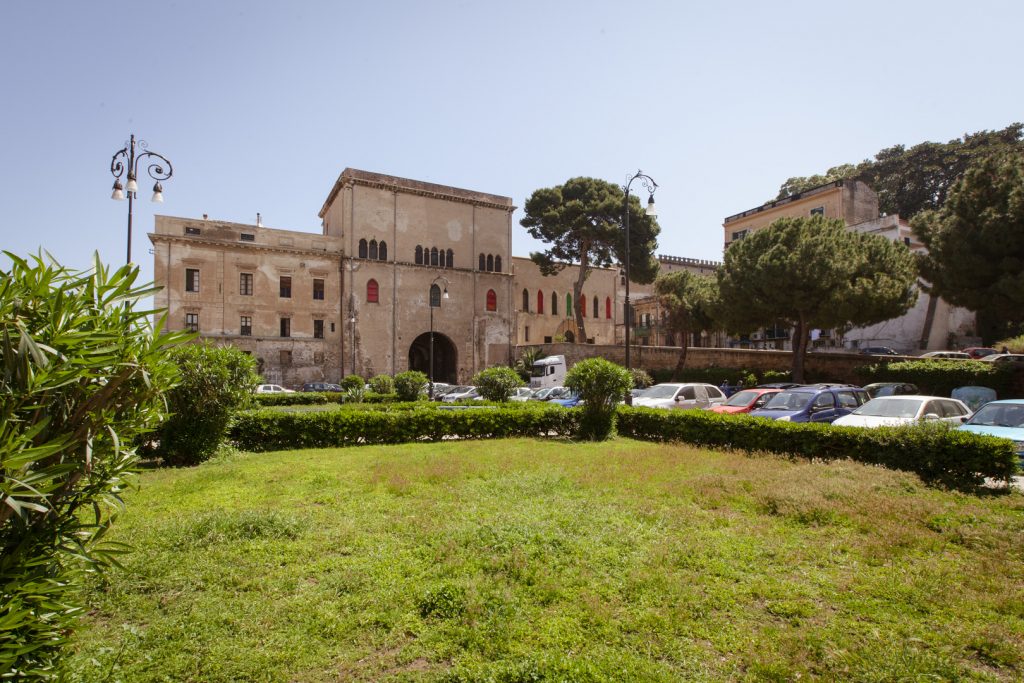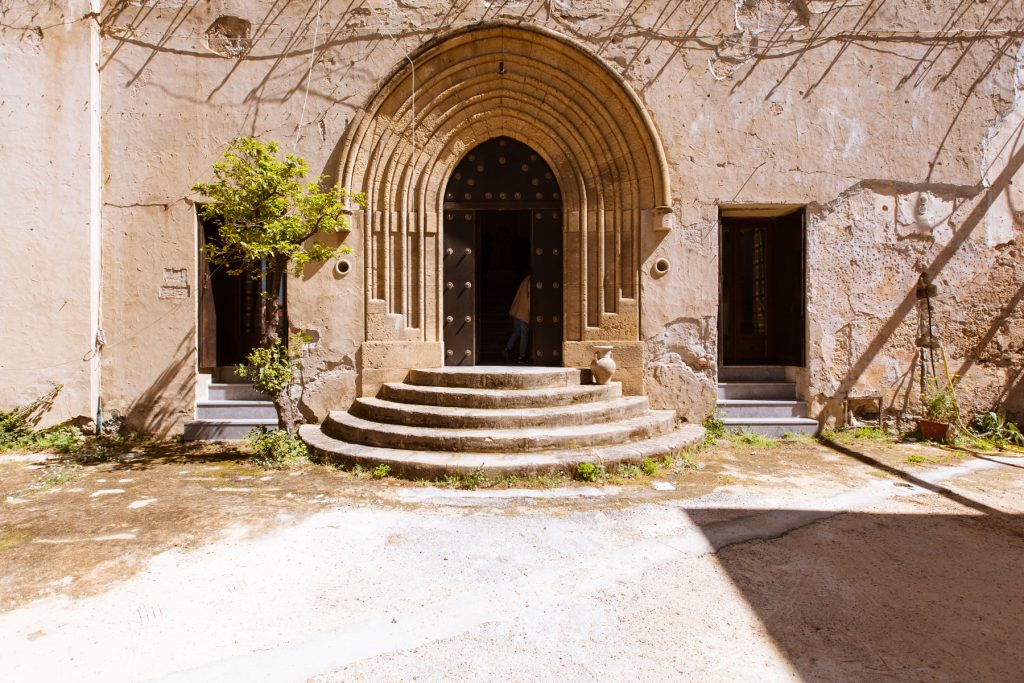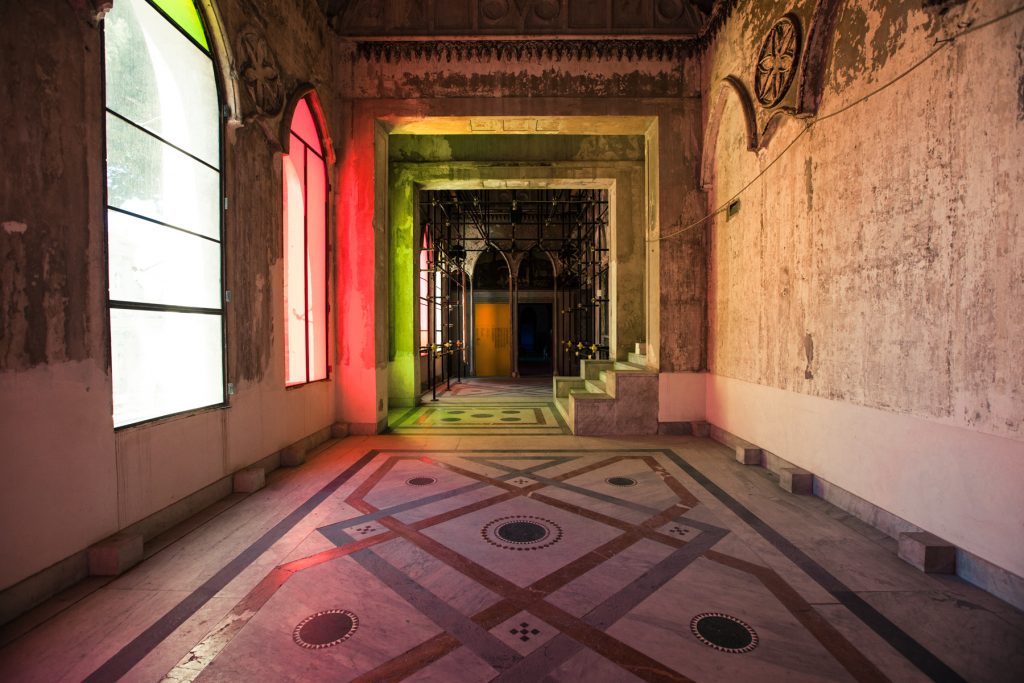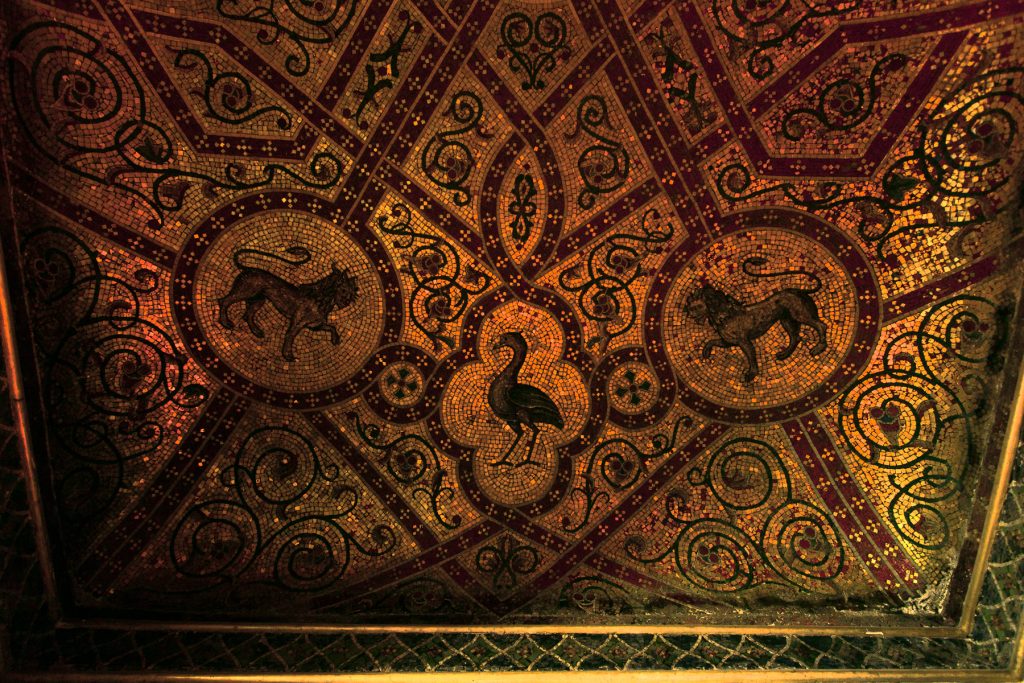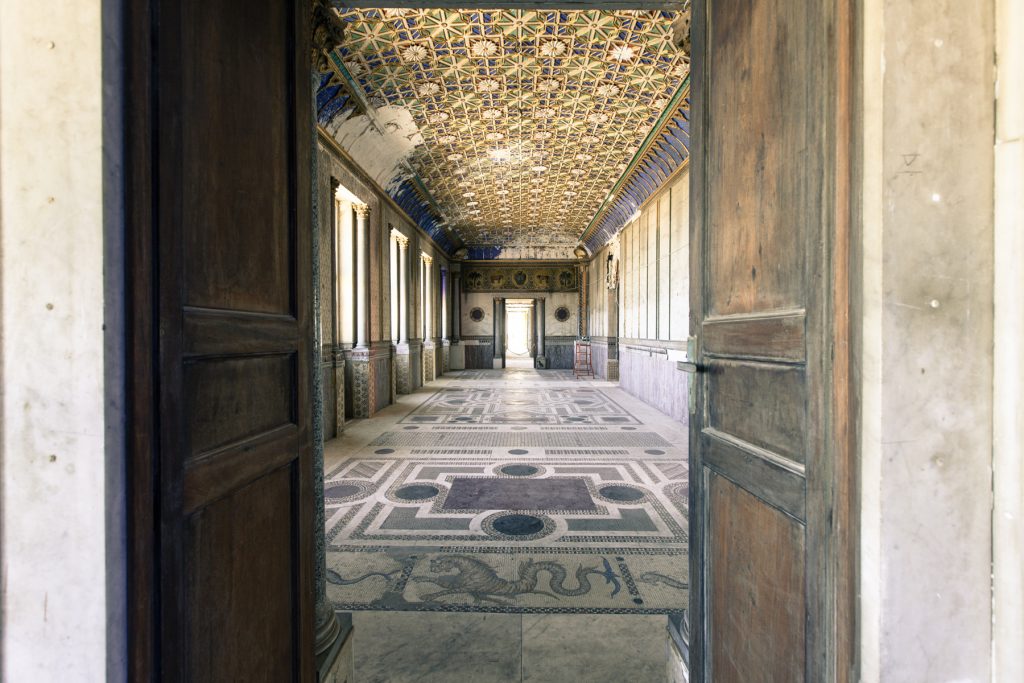Palazzo Forcella De Seta
Foro Italico Umberto I, 21
Palazzo Forcella De Seta is one of the most significant examples of nineteenth century eclectic architecture in Palermo.
The palace was originally the “casina a mare” (seaside house) of the Bonanno family, princes of Cattolica, who were in charge of securing the Vega bastion, part of the city walls. During the 1820 revolutions, the architectural complex underwent considerable damages, and consequently, it was completely reconstructed.
In 1833, the property was transferred to Enrico Forcella, Marquis of Villalonga. Thanks to Forcella’s connections with major architects of the period, he was able to involve Nicolò Puglia and Emmanuele Palazzotto to reconfigure the Palazzo, resulting in a neoclassical redesign of the central portion of the building and façade on the sea.
Its interior, composed of the “Sala dell’Alhambra”, octagonal room, and “Sala dei Mosaici,” were inspired by medieval art and architecture. The first two rooms reflected the Moorish style by adopting Arab decorations made of polychrome stucco, floors covered by colourful marble inlaid works, and a fountain inspired by the one located in the Alhambra gardens. The “Sala dei Mosaici” integrated reproductions of mosaics from the Arab-Norman royal palaces in Palermo and, in particular, those of King Roger’s Palatine Chapel in the Royal Palace of Palermo. With the involvement of the architect Giuseppe Patricolo, the façade on Piazza Kalsa, would adopt a neo-Gothic style through pointed-arched windows.
At the beginning of the nineteenth century, the palace was bought by the Marquis Francesco De Seta, prefect of Palermo, who commissioned Onofrio Tomaselli to create the fresco, “Trionfo della Primavera,” in the neoclassic hall. With this, the palace would become of the most sumptuous of the Palermitan Belle Époque.
From 1937 to 1940, the Palace was the headquarters of the Mediterranean gallery directed by the painter Lia Pasqualino Noto, later to be used as gambling room, and afterwards the location of the Board of Administrative Justice.
In 2003, it became part of the ANCE Palermo, a national association for property developers in Palermo and its provinces.
Palazzo Forcella De Seta is part of the section Out of Control Room of The Planetary Garden. Cultivating Coexistence, and hosts works by Kader Attia, Forensic Oceanography, John Gerrard, Patricia Kaersenhout, Erkan Özgen, Peng! Collective, and Laura Poitras.

